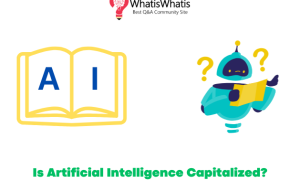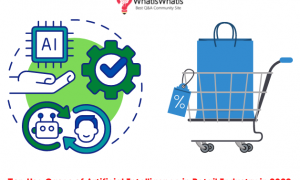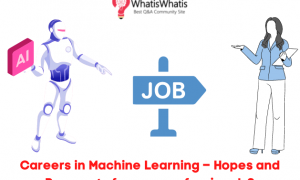“By 2020, augmented analytics will be a dominant driver of new purchases of analytics and business intelligence” – Gartner
There is data everywhere! All organizations, big and small, far and wide have huge bulks of data from where valuable and insightful information can be extracted.
Business Intelligence solutions have been doing it so far and there is much that has been achieved but as the deluge of data increases, the technology quotient gets higher and tougher.
The name is self-explanatory – Augmented Analytics – an enhanced and detailed version of data analytics. Augmented Analytics is the face of the future. There is much being done, said, and written about this latest technological advancement. Let us see what it is.
See more: 3 Factors Shaping the Future of Big Data & Machine Learning
Augmented Analytics – An Overview
Augmented analytics is the use of enabling technologies such as machine learning and AI to assist with data preparation, insight generation and insight explanation to augment how people explore and analyse data in analytics and BI platforms.
Augmented Analytics Signifies:
- Integration of AI elements into data analytics and business intelligence procedure
- Assisting users to undergo data preparation with detailed perceptions and easy sharing
- Ingenious integration of AI and NLP elements for communicable interaction and accessible analytics
- Leverage of AI and ML to augment human insight during the entire life cycle – from data creation to data readiness to sharing of insightful information
- Enhances BI through task mechanization, colloquial analytics, and appropriate algorithmic suggestion for better insights
- Utilization of numerical and language technologies to enhance data related activities
- Converting Big Data into tinier and usable units
- Searching for patterns in data or discovers other useful perceptions without participation of data experts

Why is Augmented Analytics Getting Increasingly Popular?
No wonder Augmented Analytics has its own fan base, here are some of the evident advantages that it poses for:
Discovers Concealed Potentials
With advanced AI and data analytics, it is now possible for users to garner greater insights into deep down data through automated algorithms and data outliers. Users are sure to feel the self-driven achievement of having delved deep into their own data pool.
Cognitive Technology to Enhance Human Intelligence
Since Augmented Analytics is based on theory of AI and ML’s task of enhancing human intelligence instead of replacing it, this technology is sure to sharpen human minds and involve them deeply into the entire process of data extraction and insightful study.
Also Read: The Future of Artificial Intelligence
Enhanced Safety and Confidence on Data
Because of a smart and seamless interaction between ML algorithms and humans, the algorithms execute in an advanced manner continuously, offering better, secure information.
This leads to users feeling confident about the information that is being culled out and thereby, more, and better usage of these advanced analytics.
Easy and Streamlined Data Absorption
Insights into data and data associations become easier and more simplified. The involved AI components are sharp and smart enough to do the needful activities that could take up most of human efforts. Even adjusting data sources together and data mashup becomes simpler.
Fast and Effective Value Output
AI and data analytics together are bound to fasten the entire process of data readiness, visualization, and insight. With AI based algorithms taking place of human intervention, obviously, association between various data elements becomes automated and swift. Generations of different reports, graphs and dashboards is much easier and accessible.
Spreading Knowledge of Data Usage
Irrespective of huge volumes of data, not all users have the ability or training to extract the best of information from it. Augmented analytics helps users gain confidence in their own activities and thereby, using it more and self-driven.
Because users can themselves, delve deeper into data and create visual effects, it creates a task force that can be self-reliant and possess detailed knowledge about how to use data.
Know more: Artificial Intelligence: In Search of ‘Robo Sapiens’
Increased Free Time to IT Professionals / Data Experts
Since the usual workforce is now trained on how best to leverage data sets, the IT workforce and data experts have focus and time to looks at their own work area / strategic decisions, without much disturbance from the user base.
Challenges Faced While Implementing Augmented Analytics
However rosy it may look, any new technology has its own hurdles to clear, Augmented Analytics being no less. Here are some of the challenges that may create a roadblock for smooth implementation of this innovative technology, though there are solutions to any roadblock:
- Analytical models driven by AI must be well fed with the right kind of data and must be trained enough to get detailed insights into heaps of information.
- Ensuring good performance amidst huge volumes of data is a tough task as it could hamper the computational time and speed.
- Inaccurate and insecure information creates a big hassle in working upon analytics. It must be ensured that the data pool must be barring errors and data mishaps.
- Ensuring appropriate information is also equally difficult as inappropriate data may create a data set that is of less relevance and more chaos.
Best Practices for Augmented Analytics
Implement the following pointers for best utilization of Augmented Analytics in the organization:
- User smaller sets of data to start with, so that it aligns well with your organizational goals. Going directly to huge data sets may possibly create confusion and get misleading analytics.
- Work in communication with all involved departments so that the entire workforce remains in sync with each other. Implementation of Augmented Analytics can be leveraged at its finest if the entire task force is in sync and confident of what is happening.
- Train the task force effectively on how best to get information from the company’s data mines. It surely would be helpful to implement advanced analytics productively if people in the company are well informed and trained.
Statistics on Augmented Analytics
- The global augmented analytics market was valued at USD 4,690 Million in 2018 and is expected to reach USD 31,069.7 Million by the year 2026, at a CAGR of 25.2%.
- Augmented Analytics Market worth $18.4 billion by 2023
- Major vendors in the global market include Salesforce (US), SAP (Germany), IBM (US), Microsoft (US), Oracle (US), Tableau (US), MicroStrategy (US), SAS (US), Qlik (US), TIBCO Software (US), Sisense (US), Information Builders (US), Yellowfin (Australia), ThoughtSpot (US), and Domo (US).
On a Parting Note
Business Intelligence Services are since a long time, the front end of all data sets – be it huge or small sized. As technology never looks back, BI has now gone ahead and taken the help of stalwarts like Machine Learning and Artificial Intelligence to come up with the latest face of the future – Augmented Analytics. It is so interesting to see how technological advancements can lessen the gap between human intelligence and technology, way to go!






Leave a comment